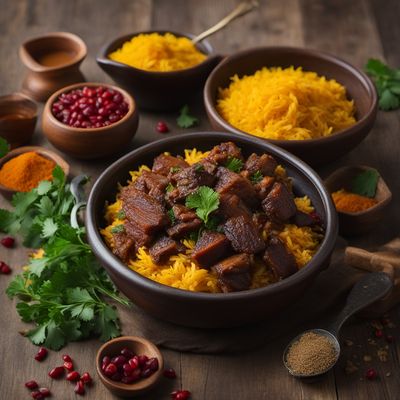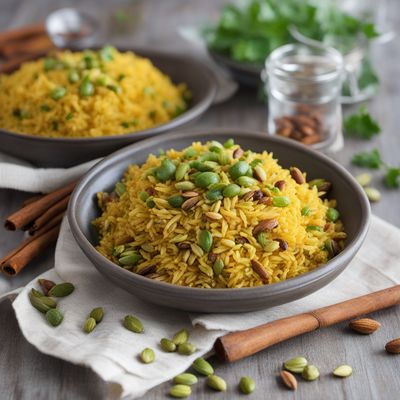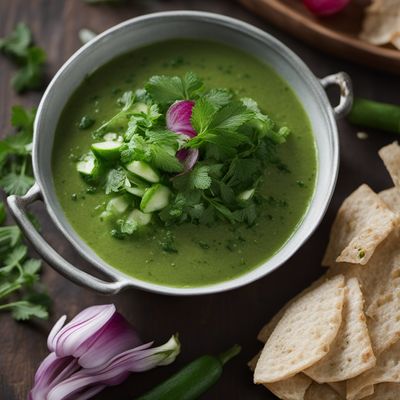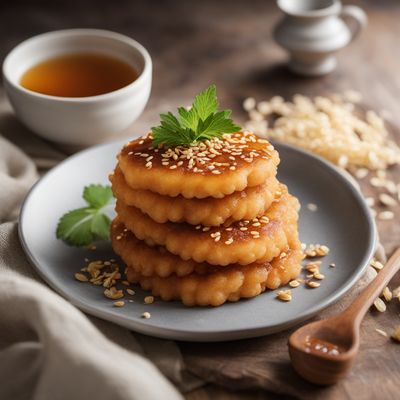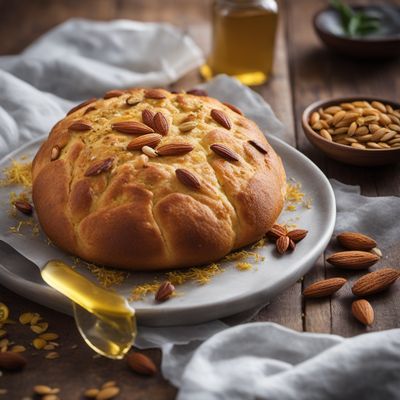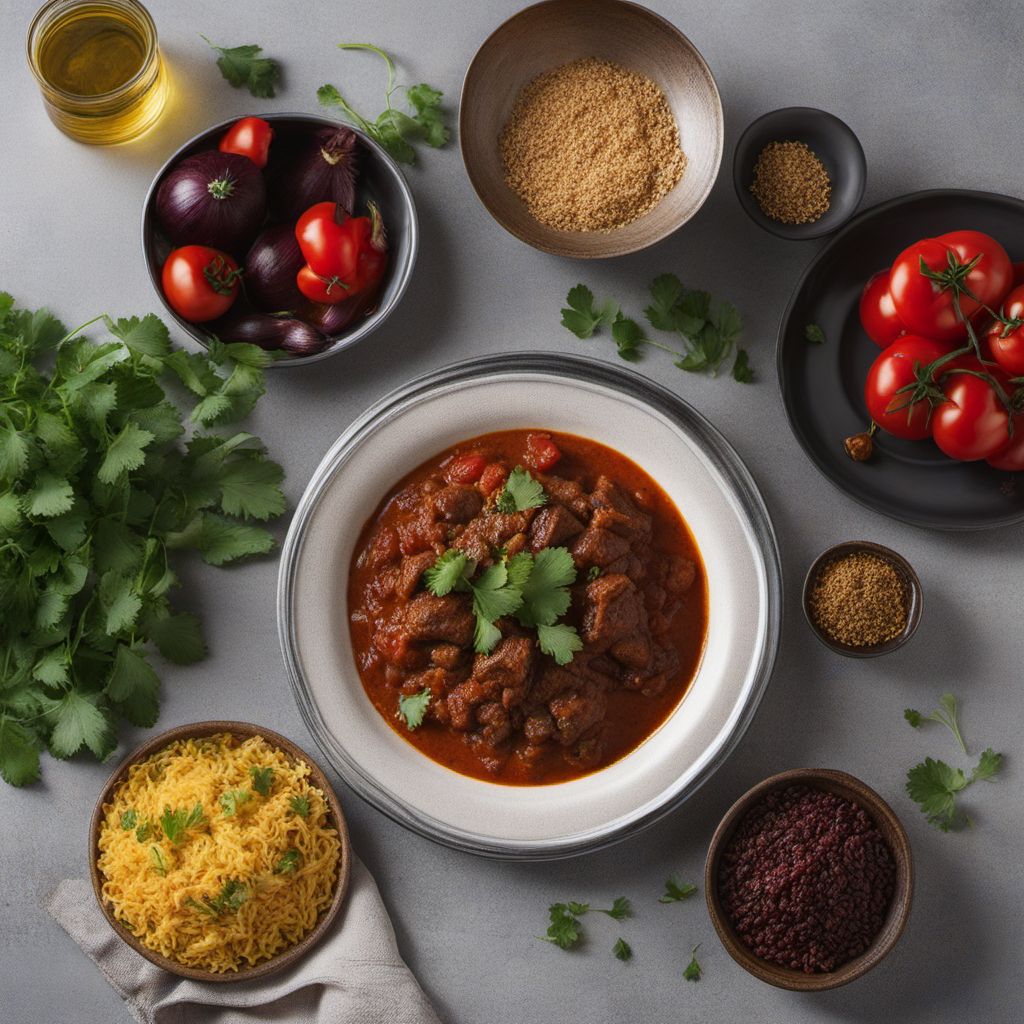
Recipe
Khoresh-e Bademjan with Persian Flavors
Saffron-infused Eggplant Stew: A Taste of Iran
4.8 out of 5
Indulge in the rich flavors of Iranian cuisine with Khoresh-e Bademjan, a traditional Persian eggplant stew. This aromatic dish combines tender eggplant, succulent beef, and a medley of spices to create a hearty and satisfying meal.
Metadata
Preparation time
20 minutes
Cooking time
1 hour 10 minutes
Total time
1 hour 30 minutes
Yields
4 servings
Preparation difficulty
Medium
Suitable for
Gluten-free, Dairy-free, Nut-free, Low-carb, High-protein
Allergens
N/A
Not suitable for
Vegan, Vegetarian, Paleo, Keto, Low-fat
Ingredients
-
2 large eggplants 2 large eggplants
-
500g (1.1 lb) beef stew meat, cubed 500g (1.1 lb) beef stew meat, cubed
-
2 onions, finely chopped 2 onions, finely chopped
-
4 cloves of garlic, minced 4 cloves of garlic, minced
-
2 tomatoes, diced 2 tomatoes, diced
-
2 tablespoons tomato paste 2 tablespoons tomato paste
-
1 teaspoon turmeric 1 teaspoon turmeric
-
1 teaspoon ground cumin 1 teaspoon ground cumin
-
1 teaspoon ground cinnamon 1 teaspoon ground cinnamon
-
1 teaspoon ground cardamom 1 teaspoon ground cardamom
-
1 teaspoon saffron threads, soaked in 2 tablespoons hot water 1 teaspoon saffron threads, soaked in 2 tablespoons hot water
-
2 tablespoons vegetable oil 2 tablespoons vegetable oil
-
Salt and pepper to taste Salt and pepper to taste
-
Fresh cilantro or parsley, for garnish Fresh cilantro or parsley, for garnish
Nutrition
- Calories (kcal / KJ): 380 kcal / 1590 KJ
- Fat (total, saturated): 18g, 5g
- Carbohydrates (total, sugars): 20g, 8g
- Protein: 35g
- Fiber: 8g
- Salt: 1.5g
Preparation
-
1.Slice the eggplants into 1-inch thick rounds and sprinkle them with salt. Let them sit for 30 minutes to remove any bitterness. Rinse and pat dry.
-
2.In a large pot, heat the vegetable oil over medium heat. Add the onions and sauté until golden brown.
-
3.Add the beef cubes and cook until browned on all sides. Stir in the minced garlic and cook for an additional minute.
-
4.Add the diced tomatoes, tomato paste, turmeric, cumin, cinnamon, and cardamom to the pot. Stir well to combine.
-
5.Gently place the eggplant slices on top of the beef mixture. Cover the pot and let it simmer on low heat for 1 hour, or until the beef is tender and the flavors have melded together.
-
6.Pour the saffron water over the stew and season with salt and pepper to taste. Simmer for an additional 10 minutes.
-
7.Serve the Khoresh-e Bademjan hot, garnished with fresh cilantro or parsley. It pairs perfectly with saffron rice or warm Iranian bread.
Treat your ingredients with care...
- Eggplants — Salting the eggplants before cooking helps remove any bitterness and excess moisture, resulting in a more flavorful and tender final dish.
Tips & Tricks
- For a vegetarian version, you can substitute the beef with chickpeas or tofu for added protein.
- To intensify the saffron flavor, crush the soaked saffron threads with a mortar and pestle before adding them to the stew.
- If you prefer a smoother texture, you can puree the stew partially or completely using an immersion blender.
- Leftovers taste even better the next day as the flavors continue to develop. Store them in an airtight container in the refrigerator for up to 3 days.
- Serve the Khoresh-e Bademjan with a dollop of creamy yogurt on top for a refreshing contrast to the rich flavors.
Serving advice
Khoresh-e Bademjan is traditionally served with fragrant saffron rice, which complements the flavors of the stew perfectly. You can also enjoy it with warm Iranian bread, such as lavash or taftoon, to soak up the delicious sauce.
Presentation advice
To elevate the presentation of Khoresh-e Bademjan, garnish the stew with a sprinkle of saffron threads and a few fresh cilantro or parsley leaves. Serve it in a beautiful ceramic bowl or on a decorative platter to showcase the vibrant colors of the dish.
More recipes...
For Khoresh bādemjān
More Iranian cuisine dishes » Browse all
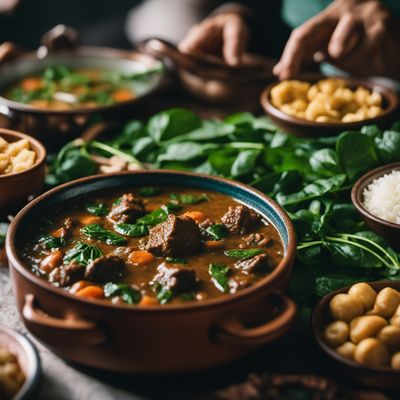
Khoresh alou esfenaj
Beef and spinach stew
Khoresh alou esfenaj is a traditional Persian stew made with lamb and spinach.

Sohbat
Sohbat is a traditional Uzbek dish that is typically served for breakfast. It is a hearty and flavorful porridge that is made with wheat and meat.

Kabab torsh
Sour kebab
Kabab torsh is a traditional Iranian dish that is typically served as a main course. The dish consists of marinated beef or lamb that is grilled...

